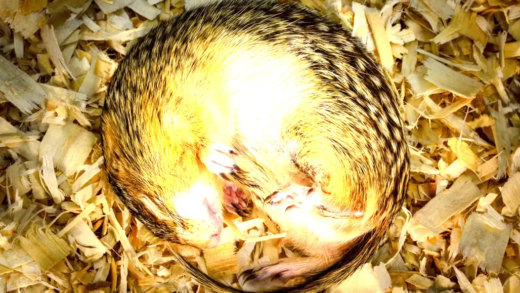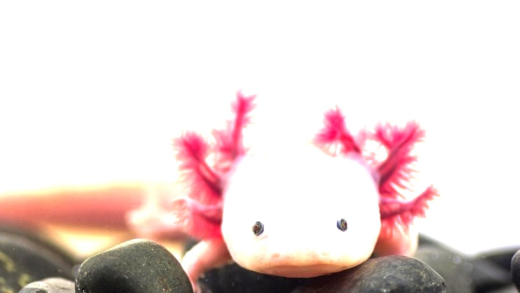Whisker fatigue is a common issue among cats that can affect their eating habits and overall well-being. It occurs when a cat’s sensitive whiskers become overstimulated by food bowls, leading to discomfort. Signs of whisker fatigue include reluctance to eat, pawing at food, and changes in behavior during mealtime. To prevent this condition, choosing the right type of bowl is crucial; shallow, wide bowls or flat plates can significantly reduce whisker stress. Whisker fatigue can also lead to health problems if not addressed, making it essential for cat owners to recognize and mitigate this issue early.
What is Whisker Fatigue?
Whisker fatigue refers to a condition where a cat experiences discomfort or stress due to its sensitive whiskers. These long, tactile hairs are not just for decoration; they play a crucial role in how cats navigate their environment. Whiskers help cats judge distances and assess the width of openings. However, when a cat’s whiskers come into contact with the sides of food bowls or other objects too frequently, it can lead to overstimulation. This discomfort can affect a cat’s eating habits and overall well-being.
How Do Whiskers Affect Eating Habits?
Whiskers are highly sensitive and can detect subtle changes in the environment. When cats eat, their whiskers touch the sides of their bowls. If the bowl is too deep or narrow, it may cause discomfort, leading to reluctance in eating. Cats might paw at their food or even refuse to eat altogether if they feel their whiskers are being overstimulated. This behavior can lead to frustration and anxiety during mealtime, impacting their overall eating habits.
Signs of Whisker Fatigue in Cats
Recognizing whisker fatigue is essential for ensuring your cat’s comfort. Common signs include:
- Reluctance to eat from their usual bowl.
- Pawing or pushing food out of the bowl.
- Eating from the floor rather than the bowl.
- Visible signs of irritation or stress during mealtime.
- Changes in eating patterns, like skipping meals.
If you notice these signs, it may be time to reassess your cat’s food bowl and consider alternatives that minimize whisker fatigue.
Why Is My Cat Pawing Food Out of Its Bowl?
Whisker fatigue often leads to cats pawing food out of their bowls. This behavior stems from discomfort caused by their sensitive whiskers. When a cat’s whiskers brush against the sides of a deep or narrow bowl, it can create an irritating sensation. This discomfort may prompt your cat to push food out as a way to avoid that unpleasant feeling. Additionally, cats may also exhibit this behavior out of boredom or frustration, particularly if they feel their food is inaccessible or if they are trying to get your attention. If you notice your cat frequently pawing at their food, it’s essential to evaluate the bowl’s design and consider options that minimize whisker fatigue.
How to Tell If My Cat Is Grumpy Due to Whisker Fatigue?
Whisker fatigue can significantly impact your cat’s mood. Signs that your cat might be grumpy due to this condition include:
- Increased irritability or aggression during mealtime.
- Avoidance of their food bowl altogether.
- Pawing at the bowl or food in frustration.
- Vocalizations, like meowing or growling, when approaching their food.
These behaviors indicate that your cat is uncomfortable. To ensure their happiness and well-being, it’s crucial to observe their eating habits closely. If they display these signs, it might be time to switch to a more suitable food bowl to alleviate whisker fatigue.
Solutions for Preventing Whisker Fatigue
Preventing whisker fatigue is vital for your cat’s comfort and happiness. Here are some effective solutions:
- Choose shallow, wide bowls: These allow your cat to eat without their whiskers constantly touching the sides.
- Opt for flat plates: A flat surface can be more comfortable for cats, reducing the chances of whisker fatigue.
- Consider silicone or rubber mats: These can help keep the bowls stable and prevent spillage, minimizing frustration.
- Monitor your cat’s behavior: Regularly assess how your cat interacts with their food and make adjustments as necessary.
Implementing these solutions can significantly enhance your cat’s mealtime experience and help prevent the discomfort associated with whisker fatigue.
Best Bowls to Prevent Whisker Fatigue
Choosing the right bowl is crucial in preventing whisker fatigue in cats. Here are some types of bowls that work best:
- Shallow Bowls: These bowls are wide and have low sides, allowing cats to eat without their whiskers touching the edges constantly.
- Flat Plates: A flat surface helps minimize whisker contact and allows cats to eat comfortably without the stress of their whiskers being stimulated.
- Wide Bowls: Bowls that are wider than they are deep are ideal. They give cats enough space to enjoy their food without the fear of bumping their whiskers.
- Silicone Mats: Using mats can prevent bowls from sliding around, making it easier for cats to access their food without frustration.
It’s essential to observe your cat’s behavior with different bowls. If they seem more relaxed and eat better, you have likely found a suitable option.
Is Whisker Fatigue Common in Cats?
Whisker fatigue is surprisingly common among cats, yet many owners may not recognize it. The sensitivity of whiskers varies from cat to cat, but many experience discomfort from traditional food bowls. Studies suggest that a significant percentage of cats display signs of whisker fatigue at some point, especially those that are more sensitive. Factors like bowl design, food type, and individual cat temperament can influence the likelihood of developing whisker fatigue. Therefore, it’s crucial for cat owners to be vigilant and proactive in addressing this condition.
Can Whisker Fatigue Lead to Other Health Problems?
Whisker fatigue can lead to several health issues if not addressed. Cats that experience discomfort may develop eating aversions, leading to inadequate nutrition and weight loss. Stress from mealtime struggles can also contribute to behavioral problems, such as increased aggression or anxiety. Additionally, cats may resort to eating less frequently or from less appropriate places, increasing the risk of digestive issues. Long-term whisker fatigue could potentially lead to more severe health complications, making it vital for owners to identify and mitigate the problem early.
What to Look for When Choosing a Food Bowl for My Cat?
When selecting a food bowl for your cat, consider the following factors:
- Material: Opt for non-porous materials like ceramic or stainless steel that are easy to clean and maintain.
- Size: Ensure the bowl is appropriately sized for your cat’s breed and eating habits. A larger cat may require a bigger bowl.
- Shape: Look for shallow, wide designs that minimize whisker contact.
- Stability: Choose bowls that are heavy enough or have a non-slip base to prevent tipping during mealtime.
- Ease of Cleaning: Select bowls that are dishwasher safe or easy to clean by hand to maintain hygiene.
Considering these factors will help ensure that your cat enjoys their meals comfortably and healthily.





Comments are closed.